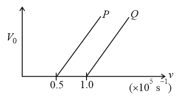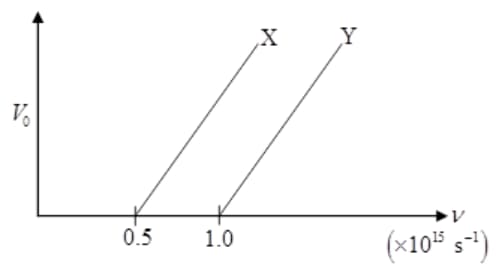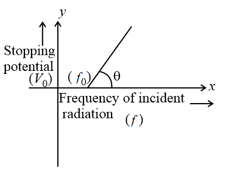Photoelectric Effect
Photoelectric Effect: Overview
This topic covers concepts, such as Photoelectric Effect, Emission of Electrons, Thermionic Electron Emission, Field Electron Emission, Secondary Electron Emission, Photoelectric Emission, Photoelectron, Work Function of a Metal, etc.
Important Questions on Photoelectric Effect
The stopping potential in an experiment on photoelectric effect is 1.5 V. The maximum kinetic energy of the photoelectron emitted would be:
The stopping potential in an experiment on the photoelectric effect is . The maximum kinetic energy of the photoelectron emitted would be
The stopping potential in an experiment on the photoelectric effect is . The maximum kinetic energy of the photoelectrons emitted would be
The maximum kinetic energy of a photoelectron is 3 eV. Its stopping potential is:
The Einstein’s photoelectric equation in terms of the stopping potential and the threshold frequency for a given photosensitive material is
The Einstein’s photoelectric equation is:
The Einstein’s photoelectric equation is:
The following graph shows the variation of stopping potential with frequency of the incident radiation for two photosensitive metals and .

Which metal has
(i) a smaller threshold wavelength?
(ii) smaller kinetic energy?
The following graph shows the variation of stopping potential with the frequency of the incident radiation for two photosensitive metals and :

(i) Which of the metals has larger threshold wavelength? Give reason.
(ii) Explain, giving reason, which metal gives out electrons, having larger kinetic energy, for the same wavelength of the incident radiation.
The graph between frequency of incident radiations and stopping potential for a given photosensitive material is as follows.

What information can be obtained from the value of the intercept on the potential axis?
The graph between frequency of incident radiations and stopping potential for a given photosensitive material is as follows.

What information can be obtained from the value of the intercept on the potential axis?
Show graphically how the stopping potential for a given photosensitive surface varies with the frequency of the incident radiation.
In the photo-electron emission, the energy of the emitted electron is
The maximum kinetic energy of electrons emitted in the photoelectric effect is linearly dependent on the________________ of the incident radiation.
Light of frequency is incident on a metal surface electrons with a maximum speed of are ejected from the surface. The threshold frequency for photoemission of electron is. (Mass of electron, , planck's constant )
When green light is incident on a certain metal surface, electrons are emitted but no electrons are emitted by yellow light. If red light is incident on the same metal surface
Light of wave length is incident on Barium. Photo electrons emitted from the surface of barium describe a circle of radius in a magnetic field of intensity . Then, what is the work function of the Barium? (Given, for electron, )
How do surface barriers work?
What is electron emission explain the terms surface barrier and work function?
What is surface barrier?
